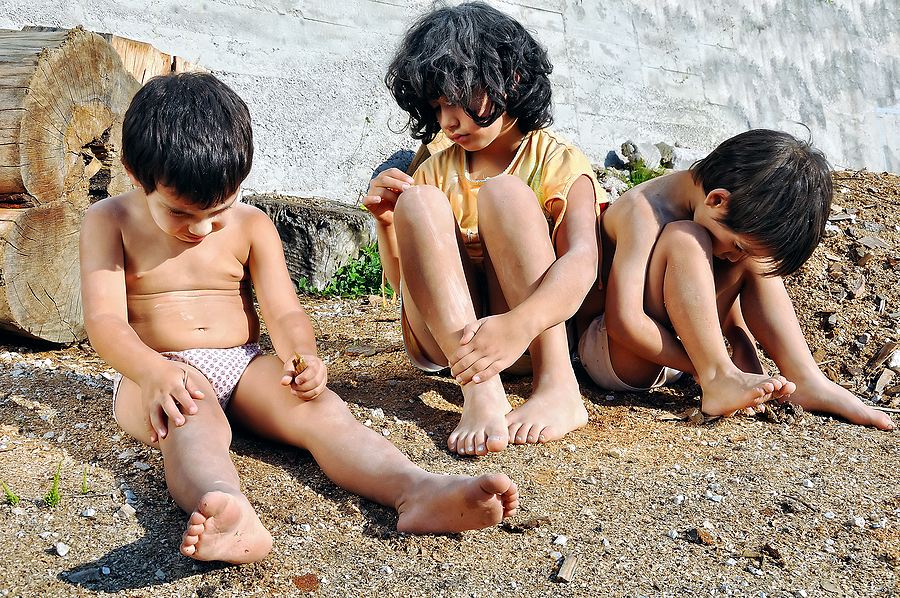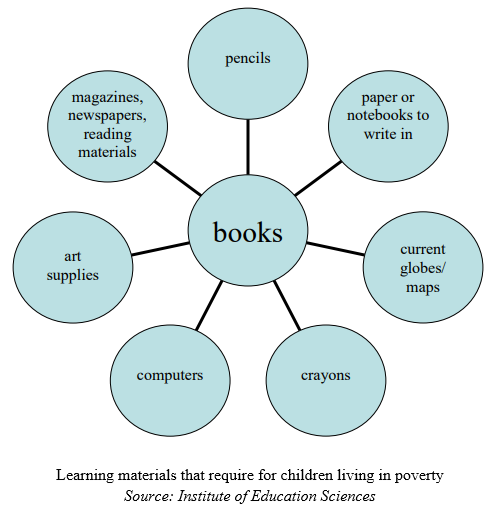Ending Learning Poverty: All Stakeholders Are Invited
Healthful Vitality | 05/22/2021 | By Guest Contributor | Ending Learning Poverty.

Learning poverty is unquestionably global and complex because learning poverty is a real problem involving children who cannot read and understand as desired. This article proposes reducing if not ending learning poverty. It also explores ways to make ending learning poverty happen as education inequity exists, mainly among children from low-income groups. This learning poverty problem is present in every part of the world, not only in the United States but also worldwide. To reduce the rate of learning poverty, we need to fight toward exploring every possibility of success firmly. Indeed, poverty consists of a lack of education when individuals have below-average knowledge of basic things they need in life. These things would involve reading, writing, spelling, mathematics, etc.
Learning poverty indicator
The Learning Poverty indicator involves two components: learning and participation. Unfortunately, learning and human development participation disparities have widened with time, impacting the mental and physical factors and social health. Therefore, we need to end learning poverty. Otherwise, how can we change the world? Then the question comes, what does ending learning poverty mean to the world? Undoubtedly, ending learning poverty means many children worldwide will learn to read proficiently, enabling immense progress and development and attitudinal and behavioral changes. The World Bank statistics reveal 53 percent of 10-year-old children in low- and middle-income countries cannot read and understand, and in the poorest countries, this number is continually close to 80 percent.
In recent years, it has become clear that many children around the world are not learning to read proficiently. As a major contributor to human capital deficits, the learning crisis undermines sustainable growth and poverty reduction.
-World Bank
Learning is an essential aspect of life that assists in the development and growth of a person. It is the foundation upon which any knowledge you need to succeed in life is built, but many communities and nations suffer from learning poverty. It decreases the chances of success in life and affects the health and well-being of the person in question. While the global consensus is that all children should read by age 10, the learning crisis continues. It also threatens countries’ struggles to build an adequate human capital pool to reshape the economy and support raising healthy families.
Mental and physical factors attached to learning poverty
Besides the above-discussed issues, there are mental and physical factors attached to learning poverty. Prevalent among this problem is the stereotype associated with it. A child with a slow learning capability could quickly get disregarded the same way a child with physical differences gets ignored. The stereotype associated with these problems could follow a child who cannot learn anything. Without addressing this learning poverty, how can we progress? Indeed, we must recognize the consequences of learning poverty and its impact on language and literacy development. When the literacy development of any society is low, society’s social health is affected negatively. It is simple: you will have fewer people with the knowledge and literary skills to change society positively. Thus, this problem affects society at large. It affects not only the individual’s progress but the development and progress of humanity. In this regard, we ought to know what poverty is.
What is poverty?
Poverty is the condition of poor people, that is, who do not have the primary requirements to guarantee their survival with quality of life and dignity. Poverty is also often referred to as the social and economic class of poor people. Moreover, poverty can be characterized by covering different aspects of individuals’ lives, such as the lack of essential goods and services for life: food, clothing, health care, accommodation, education, etc. Poverty does not, however, have a single meaning. It has a series of meanings connected through a series of resemblances. [1] In other words, it is a severe lack of physical and mental well-being, closely associated with inadequate economic resources and consumption. [2] Therefore, poverty is not in one form, and it affects individuals and societies at large by complex consequences.
Poverty and education
In a society where poverty and inequality are pretty evident, it involves social health and social injustice. The consequence is that these inequalities will cause on children. Children born in this poverty circle are most likely to become tomorrow’s poor household. The poor condition means that these children and young people do not attend school properly; instead, they need to work and abandon their dreams of a better and prosperous future. What is more troubling in this situation is the possibility that these children, when they become adults, are unable to break the vicious circle of poverty and inequality. Poverty is not an identity but a condition. It is not a natural condition but a bitter fruit of the complex dynamics of society, which must be met and succeeded. So, whenever addressing poverty, it is essential to address inequality.
Effects of poverty on literacy development and education
Studies on the effect of poverty on child education and development reveal detrimental consequences, including a prominent risk factor for impaired cognitive ability and a series of difficulties associated with learning. However, as studies on how poverty affects the brain reveal, we should not have a simplistic view that children raised in a situation of social vulnerability are necessarily less capable than others. [3] Several factors influence poverty on literacy development:
Failure to provide learning materials
Every student needs adequate proper learning materials to support literacy development. It is a significant setback to any child unable to access essential materials like books and writing materials because of their financial or social background.
The effects of poor motivation
Admittedly, it is not surprising that children with no learning materials and little to no possibility of getting the required food when they get home will have the inadequate motivation to put in the effort in learning and development. The primary things that poverty deprives them of, such as food, clothes, books, etc., are needed to aid the learning and development process.
Lack of concentration and focus
When the children have to hustle for daily bread independently, the focus and concentration on learning are divided. Having a unique financial and social background would provide children peace of mind to learn, develop, and overcome obstacles.
What are the ways to end learning poverty?
Close the socioeconomic status gap
The inequalities in socioeconomic status (SES) need to change. SES comprises not only income but also education and occupation. Unfortunately, many families stay below the standards affecting diets, hunger, and living conditions. Therefore, stakeholders and policymakers must consider allocating resources to close the socioeconomic status gap, mainly focusing on education, employment, and the family’s economic and social position.

Provision of offering proper learning materials
Appropriate learning materials needed for children living in poverty in literacy development include books, pencils, papers, and notebooks to write in, magazines, newspapers, reading materials, art supplies, computers, crayons, current globs/maps, and access to supervised internet. Additionally, these resources should be available to everyone related to these groups, including the family, the school, the local authority, and society at large as the environment they live in impacts their learning and development transformation.
Better educational infrastructure
Education infrastructure matters a lot of learning because buildings, classrooms, laboratories, and equipment provide inspiring learning environments. It appears that high-quality infrastructure promotes better instruction and enhances student outcomes. Additionally, it helps to reduce student dropout rates, among other benefits. It requires making it easy for children to attend a school. A child should not walk miles to attend school. The stakeholders should provide better educational infrastructure for these children, whether learning occurs in brick-and-mortar, hybrid, or online environments.
Educational tolerance and removing stereotypes
Studies reveal that there are stereotypes when it comes to education especially concerning children from low-income families. There should be room for every child to grow and develop at his/her pace without stress. People should be aware of the situation, including educating parents on the issue. It is surprising that even these days, there are still parents who don’t want their children to get educated because of fear that having options would make them less safe. This perception has to change, so communication about the values and advantages of education is a necessity.
Quality health insurance
When discussing socioeconomic status disparities, we should recognize that inequalities in access to healthcare status are also inequalities. Learning poverty can be fought by providing quality health insurance coverage, universal healthcare, or others. For example, a father without proper health insurance gets ill and susceptible to long-term damages due to the absence of appropriate medical treatment. That will restrain the children’s education as the parent is unable to work and cater to their needs and tuition.
Indeed, there is a rigorous continuing problem that we have been avoiding in our society, and that is learning poverty. Unfortunately, health, education, and literacy are closely interrelated. Several factors contribute to learning poverty:
- Lack of resources
- Lack of involvement of stakeholders
- Lack of enough people for mentoring and providing guidance for children
- The stereotype of education with low-income families
- Unfortunate people’s behavior based on color and language, and economic status
- Lack of technology reaches low-income groups
- Lack of enough jobs for those children’s parents
- Domestic violence and divorce
- Lack of parents’ support for children’s education
- Lack of cultural familiarization uniform with increased migration
- Lack of integrity or manipulation of data exhibited of education and development of all groups
- The benefits of inherent privileges given to particular high-income groups
The recent move from on-campus education to online without enough qualified instructors and unemployment increase adds to the intensity of learning poverty.
This article offers the following recommendations toward ending learning poverty:
- Ensure enough and appropriate learning and development materials needed for children living in poverty are provided, and the children are mentored and guided to practice them correctly. Make parents aware of the importance of children learning and development.
- Teachers continue to perform a significant role in soliciting the learning materials in their classrooms and their communities. Teachers should communicate with stakeholders sharing ideas, and reporting the status and progress of children living in poverty.
- Teachers need to compensate because they are the real change-makers, and their efforts should be properly rewarded. They can encourage soliciting books and other materials from their communities and alliances.
- Establish a global criterion and accountability board to make continuous improvements in reducing learning poverty and rigorously prevent and punish any fraud or corruption at any level in reducing reading poverty.
- Inspirit philanthropy writers and teachers (e.g., retired teachers and professors) to write and share quality learning and development materials free of cost.
References
- Paul Spicker (1984). Definitions of poverty: twelve clusters of meaning.
- Baratz and Grigbsby (1971). Thoughts on poverty and its elimination. Journal of social policy.
- Hayasaki Erika (2016). How poverty affects the brain.
(Related Article: Immediately End Corruption to End Poverty)
